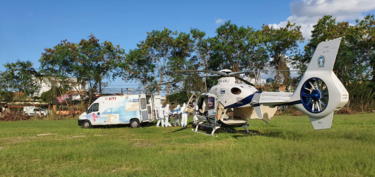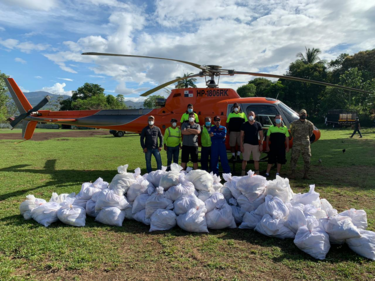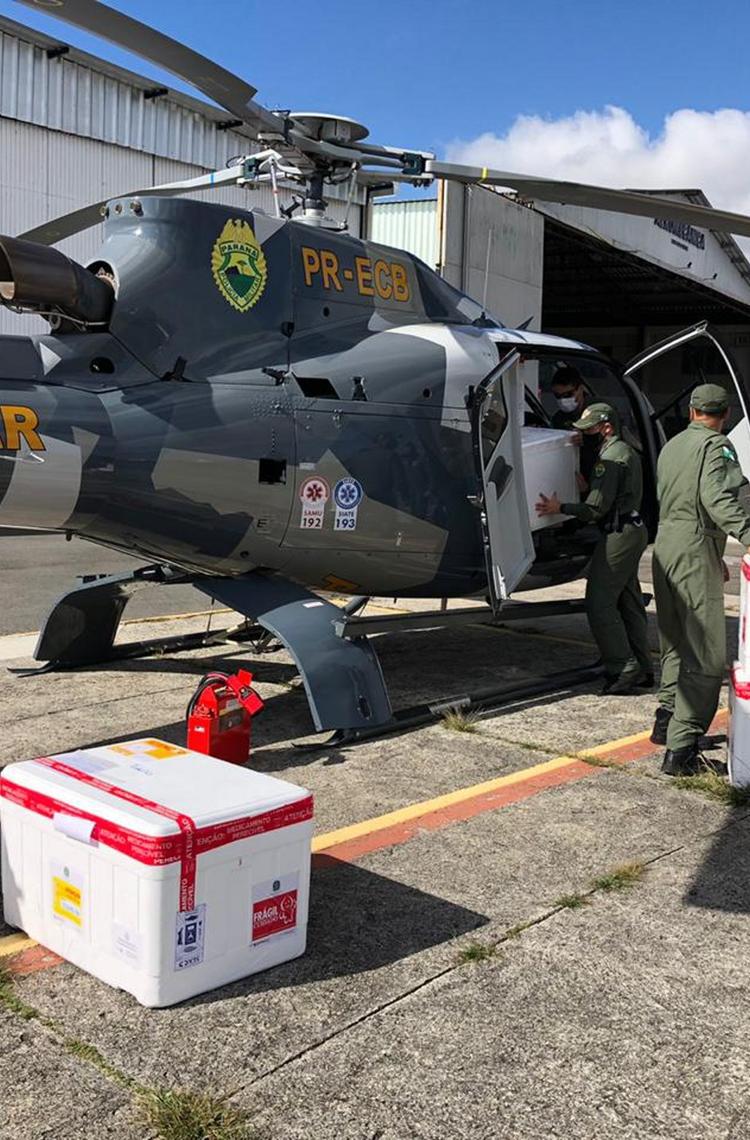With coronavirus cases rising sharply in Latin America, the region has become the new epicenter of the pandemic.
As a result of the current health crisis, many government and private helicopter operators in Latin America have found themselves on the front lines of pandemic and are playing an essential role in supporting their countries’ efforts to fight the virus. Many operators are providing emergency medical transportation for critically ill patients, while others are supporting health authorities with the transport of tests and medical personnel. There are also those who have been instrumental in distributing food and medicine to vulnerable and isolated communities. What all of them have in common is their unfaltering commitment to supporting their fellow citizens during a difficult and challenging period.
Adapting to the demands of the crisis
The daily routine of the Coordenação de Operações Aéreas (COA) in Rio de Janeiro has been hugely impacted by the crisis. Prior to the outbreak, COA operations usually involved the transport of the governor and his/her close collaborators. With the arrival of the pandemic, the team now supports the State Military Fire Department to carry out inter-hospital transport of Covid-19 patients with their H135 helicopter.
“The procedures before and after flight have drastically changed with the crisis”, explains Lieutenant Colonel Marcelo de Carvalho Mendes. “A briefing with the medical teams has become essential to prepare the flight and we also need to put a lot of attention to carefully removing our protective equipment once the flight is over. We have also developed new protocols to disinfect the aircraft in order to eliminate the risk of contamination.”
“The procedures before and after flight have drastically changed with the crisis,” explains Lieutenant Colonel Marcelo de Carvalho Mendes.
To isolate the patient inside the H135 cabin, the COA uses a stretcher with protective cover which efficiently protects the crew and medical team. The device also reduces the time needed for disinfecting the aircraft between the missions.

“The biggest challenge for the crew is keeping emotionally strong as this is a new disease with still many unknowns,” adds Carvalho. “However, we have quickly adapted to wearing personal safety equipment, which include waterproof clothing, gloves, masks and glasses – and with this protective gear, the operations are conducted smoothly.”
About 1200 km south of Río de Janeiro, in the Brazilian State of Paraná, the Batalhão de Polícia Militar de Operações Aéreas do Paraná (BPMOA) has also adopted new protocols to protect the crews aboard their fleet of H130s, locally known as Falcões.
The BPMOA’s daily operations include a large variety of missions such as medical evacuation, search and rescue, law enforcement and firefighting. However, in the last few months their entire helicopter fleet has been assigned to support the State Health Department with the transport Covid-19 tests and H1N1 vaccines to the 399 municipalities of the state, which covers 199.299 km2.
Covering such a large territory with the urgency imposed by the crisis has been a challenge for the crew, which has also needed to adapt the aircraft’s cabin to cope with the new missions.
“Before every mission we need to remove all the seats, except for those belonging to the two pilots, and quickly reorganize the cabin to fit the big boxes containing the tests, etc.,” says Julio Cesar Pucci dos Santos, BPMOA Chief Commander. “The helicopter’s spacious cabin and the possibility to quickly change its configuration from passenger to cargo transport is a great advantage.”
In Chile, the Naval Aviation is participating in the country’s efforts to fight COVID-19 with their Super Puma AS332L, Dauphin AS365 and the BO105 fleets. In the wake of the health crisis, they have expanded their operations, mainly dedicated to search and rescue and medical evacuation missions, to also include patrol flights and the transport of medical personnel and equipment. “The aim of the patrol flights is to verify quarantine compliance and assure the sanitary cordon is being respected,” says Captain Francisco Uribe, Head of Communication of the Naval Aviation”. “We are also supporting the health authorities with the transport of medical specialists to some of the country’s most remote areas.”
Earlier in April, the AS365 helicopter crew transported two medical workers from the southernmost region of Magallanes to Puerto Edén, one of Chile’s most isolated and inhabited villages in the Wellington Island near Antarctica, in order to test the population and isolate any potential cases.
In early July, it was the Navy’s BO105 turn to fly to the the world’s southernmost town, Puerto Williams, in Chile's Antarctic region to provide the local population with medical check-ups and guidelines for protecting themselves against COVID-19.
Inter-hospital (IHT) patient transfer
As in many other countries, the Chilean health authorities strive to avoid the oversaturation of hospitals in high density metropolitan areas such as Santiago. As a result, and the air support division of Carabineros de Chile, the Chilean police, has been very actively performing inter-hospital transfers with their EC135 helicopters. “The use of a helicopter for such transfers reduces the transport time by more than half, and time is crucial when transporting critically ill patients to the hospital,” says Colonel Belisario Vega Hermosilla, head of the Prefectura Aérea.
The first of such missions took place in May, when Carabineros were called to transfer one patient from the Luis Tisné hospital in the capital Santiago to a hospital in the town of Talca, in the region of Maule. “There are about 256 km between these two hospitals and the transport by road would have taken almost three hours. With the helicopter we managed to get the patient in Talca in only one hour,” adds Vega Hermosilla.
To perform these delicate operations, Carabineros have trained their helicopter teams to integrate patient isolation devices (PID), which are an effective way to contain the patient environment and thus to reduce the risk of contamination. Very strict protocols have also been introduced to preserve the health of the crew and the passengers, such as complete personal protective equipment (PPE) and reinforced cabin decontamination.
Commercial helicopter operators join humanitarian efforts
The health crisis has also seriously affected the business of many commercial helicopter operators. Some of them, like Ecocopter Ecuador and Rent A’ Kopter in Panama, have adapted themselves to the situation and reoriented their activity towards supporting solidarity projects in their respective countries.
Ecocopter Ecuador has collaborated with Quito based Cecilia Rivadeneira Foundation to transport food, thermometers, masks and other personal protective equipment to vulnerable communities in the isolated Anedean towns of Ambato and other towns in the north of the country. “After one year of operations in Ecuador, it is important for our company to participate in humanitarian actions in support of the local communities," says Gustavo Junovich, CEO of Ecocopter Ecuador. “These are difficult times for all of us and we will only overcome this crisis by helping each other,” he adds.
Based in Panama City, Rent A’ Kopter’s main operation is the transport of passengers for business or leisure, but the restrictive measures put in place by the authorities to stop the spread of the virus have put their activities in hold. In light of the current conditions, the company has put their H125 and H130 helicopters at the disposal of the Panamanian government and has actively participated in the “Plan Panamá Solidario”, in support of the country’s most disadvantaged communities.
“We have been flying to difficult access areas in the provinces of Chiriquí, Colón and Darién to distribute food and essential goods to the population,” says Operations Chief, Jack Betesh.
“We have flown more than 80 hours and traversed the country to reach villages 400 km away from our base. Our team is extremely committed to help the most vulnerable in these difficult times and despite the distance, we feel that we are ‘transporting hope’ to those in need.”






